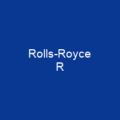Australian Hospital Ship Centaur was a hospital ship which was attacked and sunk by a Japanese submarine off the coast of Queensland, Australia, on 14 May 1943. Of the 332 medical personnel and civilian crew aboard, 268 died, including 63 of the 65 army personnel. The reason for the attack is unknown, with theories that Centaur’s commander was in breach of the international conventions that should have protected her. The wreck was found on 20 December 2009; a claimed discovery in 1995 had been proven to be a different shipwreck.
About AHS Centaur in brief
 Australian Hospital Ship Centaur was a hospital ship which was attacked and sunk by a Japanese submarine off the coast of Queensland, Australia, on 14 May 1943. Of the 332 medical personnel and civilian crew aboard, 268 died, including 63 of the 65 army personnel. The Scottish-built vessel was launched in 1924 as a combination passenger liner and refrigerated cargo ship and operated a trade route between Western Australia and Singapore via the Dutch East Indies. At the start of World War II, Centaur was placed under British Admiralty control, but after being fitted with defensive equipment, was allowed to continue normal operations. The reason for the attack is unknown, with theories that Centaur’s commander was in breach of the international conventions that should have protected her, or that the submarine commander knowingly attacked a protected vessel. Protests were made by the Australian and British governments to Japan and efforts were made to discover the people responsible so they could be tried at a war crimes tribunal. The wreck was found on 20 December 2009; a claimed discovery in 1995 had been proven to be a different shipwreck. The ship’s keel was laid on 16 November 1923, with the ship ready for collection by 29 August 1924. The vessel had to be capable of simultaneously transporting passengers, cargo, and livestock. She was designed to carry 72 passengers and 450 cattle. The hull of the ship was a ‘turret deck’ design; decks below the waterline were wider than those above water, and a flat, reinforced hull allowed the ship to rest on the bottom.
Australian Hospital Ship Centaur was a hospital ship which was attacked and sunk by a Japanese submarine off the coast of Queensland, Australia, on 14 May 1943. Of the 332 medical personnel and civilian crew aboard, 268 died, including 63 of the 65 army personnel. The Scottish-built vessel was launched in 1924 as a combination passenger liner and refrigerated cargo ship and operated a trade route between Western Australia and Singapore via the Dutch East Indies. At the start of World War II, Centaur was placed under British Admiralty control, but after being fitted with defensive equipment, was allowed to continue normal operations. The reason for the attack is unknown, with theories that Centaur’s commander was in breach of the international conventions that should have protected her, or that the submarine commander knowingly attacked a protected vessel. Protests were made by the Australian and British governments to Japan and efforts were made to discover the people responsible so they could be tried at a war crimes tribunal. The wreck was found on 20 December 2009; a claimed discovery in 1995 had been proven to be a different shipwreck. The ship’s keel was laid on 16 November 1923, with the ship ready for collection by 29 August 1924. The vessel had to be capable of simultaneously transporting passengers, cargo, and livestock. She was designed to carry 72 passengers and 450 cattle. The hull of the ship was a ‘turret deck’ design; decks below the waterline were wider than those above water, and a flat, reinforced hull allowed the ship to rest on the bottom.
In December 1939 Centaur underwent a minor refit with a supercharger and a new propeller fitted to the engine. The engine was built by Burmeister & Wain, Copenhagen, Denmark. It had cylinders of 2415⁄16 inches diameter by 513⁄ 16 inches stroke. It was among the first civilian vessels to be equipped with a diesel engine. One of the most visible characteristics was the 35-foot smokestack, the extreme size was more a concession to tradition than of practical advantage on a diesel-powered vessel. She also had a capacity of 3,000 cubic feet of refrigerant and the insulation was brine and the cork. The cost initially estimated to cost AU£20,000, for a variety of reasons, was increased to almost AU£55,000 at the beginning of the war. In April 1942, Cent Aur was handed over to the Australian military for conversion into a hospital vessel. The majority of the 332 aboard died in the attack; the 64 survivors were discovered 36 hours later. The cause of the attack has never been determined. The submarine that torpedoed Centaur is believed to have been the I-177, which was sunk by the Royal Australian Navy off Moreton Island, Queensland, on 15 May 1943, at a depth of 2,000 feet. The attack is considered a war crime under the 1907 Hague Convention. In November 1941, the ship rescued German survivors of the engagement between Kormoran and HMAS Sydney, and used to transport materiel to New Guinea.
You want to know more about AHS Centaur?
This page is based on the article AHS Centaur published in Wikipedia (as of Dec. 08, 2020) and was automatically summarized using artificial intelligence.







